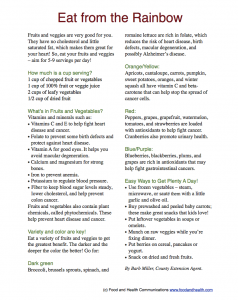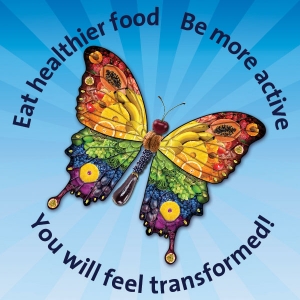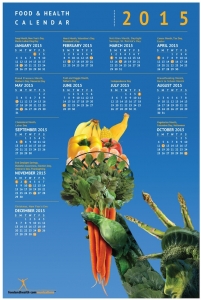Health Literacy Month: Fruits and Vegetables
It's Health Literacy Month! How are you celebrating?Fruits and vegetables have always been especially key for me during Health Literacy Month, because they offer so much insight into the connection between food and health. Phytochemicals, nutrients, fiber, etc, all come together to prevent disease and promote good health. What could be more perfect for this month?!Of course, no celebration from me would be complete without a free handout. The one offers an inside look at the health benefits of fruits and vegetables, and it's organized by color! This makes it super accessible and easy to apply to real life. There's a preview below. If you like what you see, download the handout and offer it to your clients. Eat From the RainbowFruits and veggies are very good for you. They have no cholesterol and little saturated fat, which makes them great for your heart! So, eat your fruits and veggies – aim for 5-9 servings per day!How much is a cup serving?1 cup of chopped fruit or vegetables1 cup of 100% fruit or veggie juice2 cups of leafy vegetables1/2 cup of dried fruitWhat’s in Fruits and Vegetables?Vitamins and minerals such as:
Eat From the RainbowFruits and veggies are very good for you. They have no cholesterol and little saturated fat, which makes them great for your heart! So, eat your fruits and veggies – aim for 5-9 servings per day!How much is a cup serving?1 cup of chopped fruit or vegetables1 cup of 100% fruit or veggie juice2 cups of leafy vegetables1/2 cup of dried fruitWhat’s in Fruits and Vegetables?Vitamins and minerals such as:
- Vitamins C and E to help fight heart disease and cancer.
- Folate to prevent some birth defects and protect against heart disease.
- Vitamin A for good eyes. It helps you avoid macular degeneration.
- Calcium and magnesium for strong bones.
- Iron to prevent anemia.
- Potassium to regulate blood pressure.
- Fiber to keep blood sugar levels steady, lower cholesterol, and help prevent colon cancer.
Fruits and vegetables also contain plant chemicals, called phytochemicals. These help prevent heart disease and cancer.Variety and color are key!Eat a variety of fruits and veggies to get the greatest benefit. The darker and the deeper the color the better! Go for:Dark greenBroccoli, brussels sprouts, spinach, andromaine lettuce are rich in folate, which reduces the risk of heart disease, birth defects, macular degeneration, and possibly Alzheimer’s disease.Orange/Yellow:Apricots, cantaloupe, carrots, pumpkin, sweet potatoes, oranges, and winter squash all have vitamin C and beta-carotene that can help stop the spread of cancer cells.Red:Peppers, grapes, grapefruit, watermelon, tomatoes, and strawberries are loaded with antioxidants to help fight cancer. Cranberries also promote urinary health.Blue/Purple:Blueberries, blackberries, plums, and grapes are rich in antioxidants that may help fight gastrointestinal cancers.Easy Ways to Get Plenty A Day!
- Use frozen vegetables – steam, microwave, or sauté them with a little garlic and olive oil.
- Buy prewashed and peeled baby carrots; these make great snacks that kids love!
- Put leftover vegetables in soups or omelets.
- Munch on raw veggies while you’re fixing dinner.
- Put berries on cereal, pancakes or yogurt.
- Snack on dried and fresh fruits.
By Barb Miller, County Extension Agent.Check out these fantastic fruit and vegetable resources...


